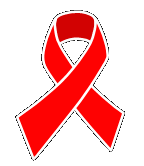June 27th is National HIV Testing Day
Scotch Plains, NJ – June 2015
June 27th is National HIV Testing Day
It does not discriminate against gender, race, age, religion, or neighborhood you live in.It typically shows up uninvited and people are usually devastated to hear of its presence.What is it?It is not your new neighbor and it is not the town sheriff.It is the Human Immunodeficiency Virus, better known as “HIV”. HIV is spread through the blood, vaginal fluid, semen, and breast milk of people infected with HIV.Most people get HIV by having sex with an infected person, sharing a needle or by simply being born to an HIV infected mother.Those that are educated on how to prevent, treat, and live with HIV / AIDs are people who care about themselves and those around them.As cliché as it may be, knowledge truly is power.June 27th is National HIV Testing Day.An annual campaign put in place in hopes to encourage HIV testing on a national level.NJ Top Doc, Dr. Shirish V. Bhatt of Fairfield Primary Doctors, offers his candid and positive outlook on the disease and what the future may bring.
Per the Aids.gov website, “National HIV Testing Day (NHTD) is an annual campaign to encourage people of all ages to ‘Take the Test, Take Control’.Too many people don’t know they have HIV. In the United States, nearly 1.1 million people are living with HIV, and almost one in five don’t know they are infected. Getting tested is the first step to finding out if you have HIV. If you have HIV, getting medical care and taking medicines regularly helps you live a longer, healthier life and also lowers the chances of passing HIV on to others.” HIV, short for Human Immunodeficiency Virus, is a lentivirus that causes Acquired Immunodeficiency Syndrome (AIDS).AIDS is a condition in which humans suffer from failing immune systems, causing them to be much more susceptive to life-threatening infections and cancers.
It’s a popular misconception that having HIV means having AIDS.There are many people who are infected with HIV that don’t get sick for many years.As HIV continues, it slowly wears down the immune system.Viruses, parasites, fungi and bacteria that usually don’t cause any problems can make you very sick if your immune system is damaged. In the mid-1990s, AIDS was a leading cause of death. However, newer treatments have cut the AIDS death rate significantly. For more information, see the US Government fact sheet at http://www.niaid.nih.gov/factsheets/aidsstat.htm (www.aids.org).
To be diagnosed as “HIV Positive” means that both an EIA test and a Western blot test both came up positive for HIV antibodies.Once a person has been infected, it will stay in their body forever. Those infected with the disease that goes untreated typically meet death sooner than those who do seek treatment.Thanks to scientific research and major technological advances over the years, HIV has become a more manageable disease.Board Certified in Internal Medicine, Dr. Bhatt has seen significant change in the world of HIV and AIDS.“Over the period of the last 20 years, I have witnessed a remarkable transformation in how technology has allowed us to better diagnose, more optimally prevent transmission, and more effectively treat those patients with HIV.The technology revolution was based on improvements in RNA and DNA amplification, starting with the Polymerase Chain Reaction (PCR).Through DNA and RNA amplification, technologies such as Western Blot Electrophoresis were designed to identify the presence or absence of HIV antibodies in blood tests.The progressive decrease in cost of testing coupled with the advent of home based testing that allowed for buccal swabs to be taken for rapid results has created an ease responsible for more patient asking for testing more frequently. Knowing that a positive test result has effective treatment options that maintain quality and length of life is crucial to patients who may be “on the fence” about getting tested.It helps tip the balance toward getting tested, and if needed, treated.Lastly, the medications originally designed for HIV had such violent toxicities that the medication itself was a barrier to feeling “well”.Currently, the use of combination therapy and close monitoring of patient’s viral load and cell counts allows clinicians to know that the virus is suppressed to an UNDETECTABLE level with adequate immune system integrity (good CD4 counts).The side effects of medications for HIV are more tolerable and lead to higher compliance with the regimen, all designed to stay alive and well for years.Considering the aforementioned advances I have personally witnessed over the past 20 years of my practice, I am confident the next 20 years will bring even better testing, better treatments, and potentially a cure for HIV.” Dr. Bhatt’s outlook on the future is certainly encouraging. It should surely bring some hope to those infected and those who know others affected by HIV.
Many people avoid getting tested for HIV in fear of the truth.People need to know their HIV status; whether positive or negative, in order to better protect themselves and their friends and families.In a CNN news article from December 1, 2013, titled “HIV no longer considered death sentence” by Saundra Young, she states, “In 1981, when the virus was discovered, being HIV-positive was considered a death sentence.For most patients today, it’s a chronic disease, much like diabetes or heart disease.”This statement could not be a better perspective on HIV in today’s world.Often we are reminded of the nasty stigma that HIV/AIDS had in the early 80s when it was less understood.In 2014, we are much more knowledgeable about the disease and people that are HIV positive are now able to live wonderful, happy, long lives!
Do you know what your HIV status is? It is highly recommended that you get tested often, rather than just once.
